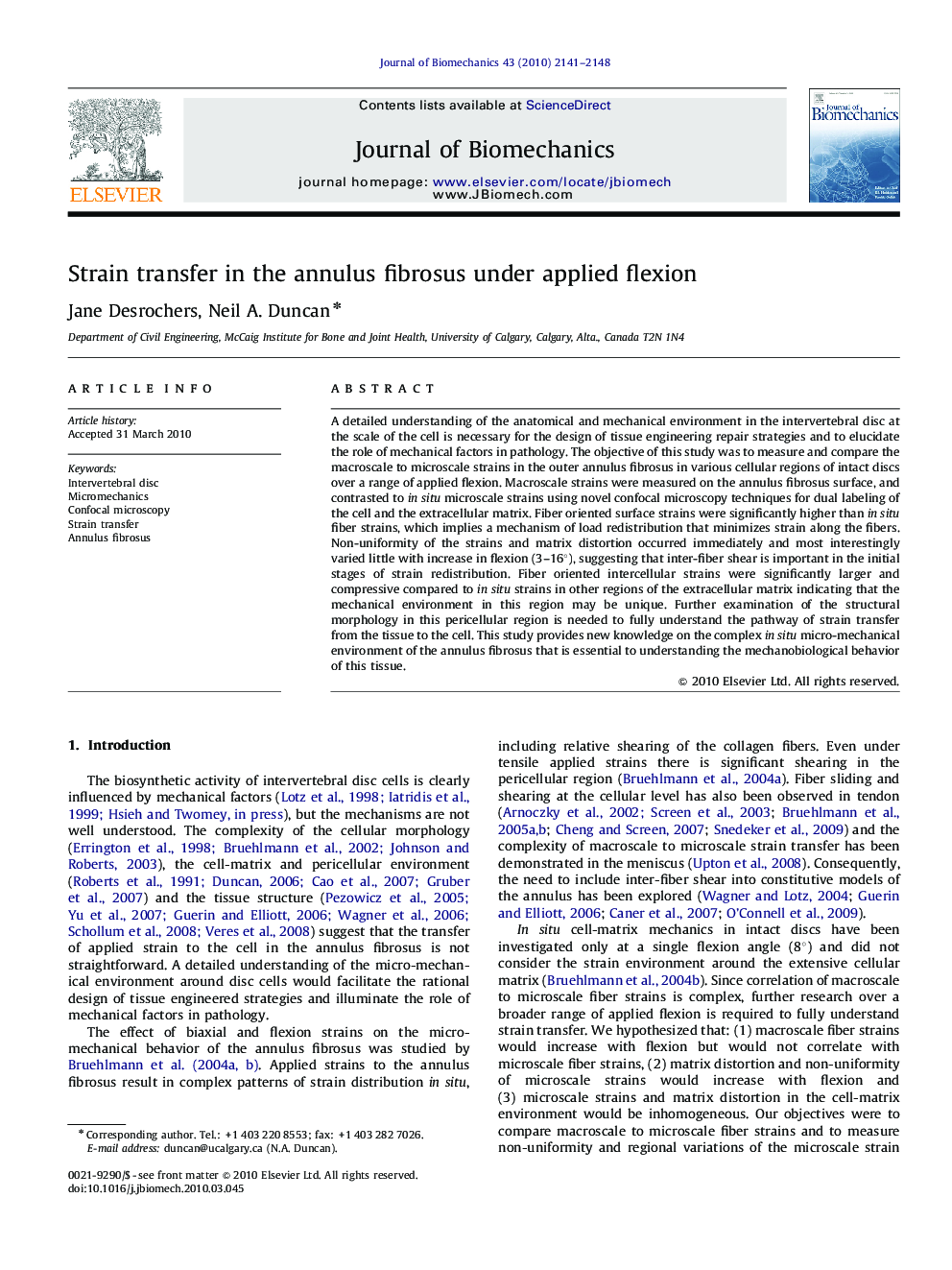| Article ID | Journal | Published Year | Pages | File Type |
|---|---|---|---|---|
| 873732 | Journal of Biomechanics | 2010 | 8 Pages |
A detailed understanding of the anatomical and mechanical environment in the intervertebral disc at the scale of the cell is necessary for the design of tissue engineering repair strategies and to elucidate the role of mechanical factors in pathology. The objective of this study was to measure and compare the macroscale to microscale strains in the outer annulus fibrosus in various cellular regions of intact discs over a range of applied flexion. Macroscale strains were measured on the annulus fibrosus surface, and contrasted to in situ microscale strains using novel confocal microscopy techniques for dual labeling of the cell and the extracellular matrix. Fiber oriented surface strains were significantly higher than in situ fiber strains, which implies a mechanism of load redistribution that minimizes strain along the fibers. Non-uniformity of the strains and matrix distortion occurred immediately and most interestingly varied little with increase in flexion (3–16°), suggesting that inter-fiber shear is important in the initial stages of strain redistribution. Fiber oriented intercellular strains were significantly larger and compressive compared to in situ strains in other regions of the extracellular matrix indicating that the mechanical environment in this region may be unique. Further examination of the structural morphology in this pericellular region is needed to fully understand the pathway of strain transfer from the tissue to the cell. This study provides new knowledge on the complex in situ micro-mechanical environment of the annulus fibrosus that is essential to understanding the mechanobiological behavior of this tissue.
